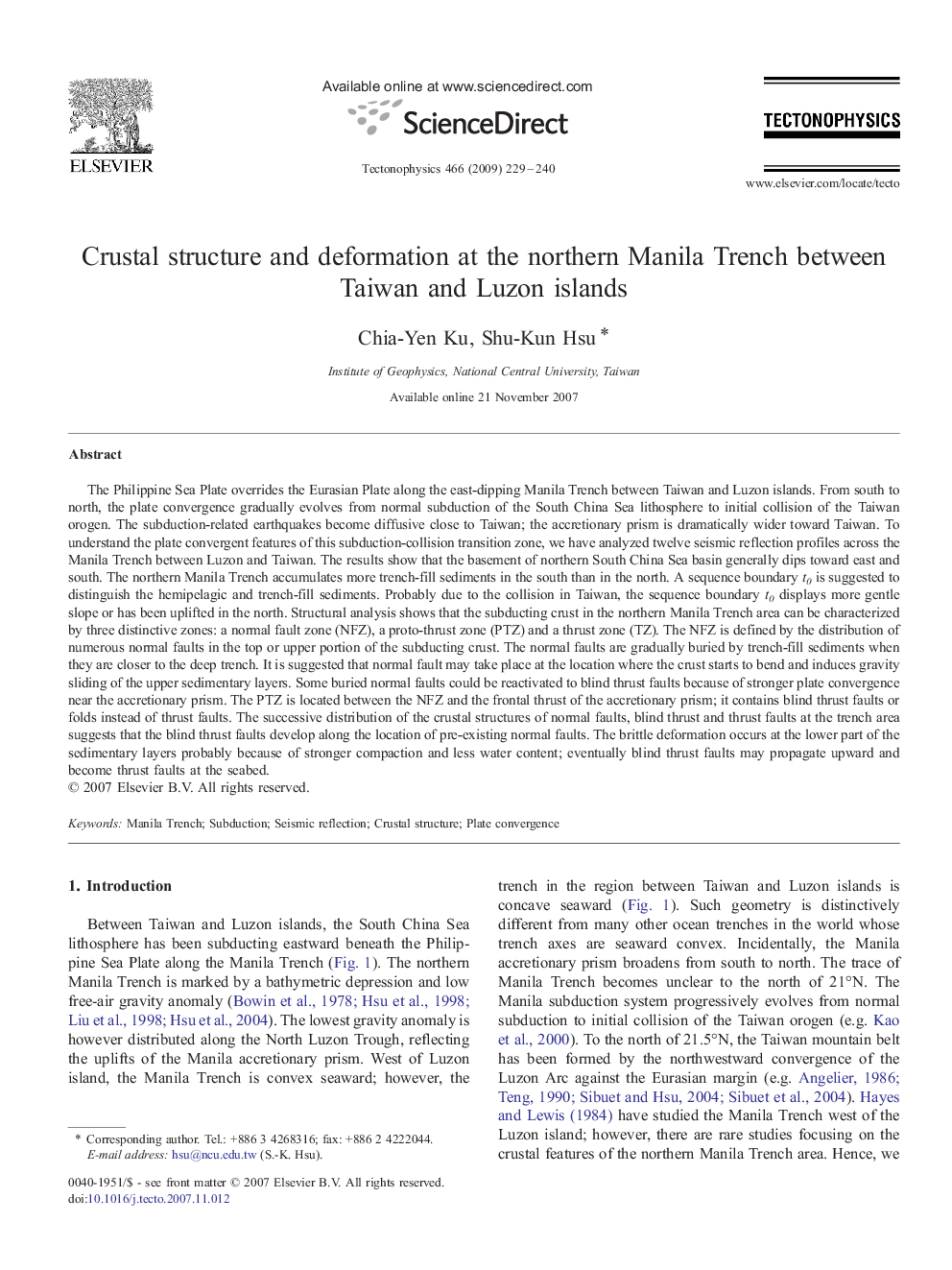| کد مقاله | کد نشریه | سال انتشار | مقاله انگلیسی | نسخه تمام متن |
|---|---|---|---|---|
| 4694250 | 1636898 | 2009 | 12 صفحه PDF | دانلود رایگان |

The Philippine Sea Plate overrides the Eurasian Plate along the east-dipping Manila Trench between Taiwan and Luzon islands. From south to north, the plate convergence gradually evolves from normal subduction of the South China Sea lithosphere to initial collision of the Taiwan orogen. The subduction-related earthquakes become diffusive close to Taiwan; the accretionary prism is dramatically wider toward Taiwan. To understand the plate convergent features of this subduction-collision transition zone, we have analyzed twelve seismic reflection profiles across the Manila Trench between Luzon and Taiwan. The results show that the basement of northern South China Sea basin generally dips toward east and south. The northern Manila Trench accumulates more trench-fill sediments in the south than in the north. A sequence boundary t0 is suggested to distinguish the hemipelagic and trench-fill sediments. Probably due to the collision in Taiwan, the sequence boundary t0 displays more gentle slope or has been uplifted in the north. Structural analysis shows that the subducting crust in the northern Manila Trench area can be characterized by three distinctive zones: a normal fault zone (NFZ), a proto-thrust zone (PTZ) and a thrust zone (TZ). The NFZ is defined by the distribution of numerous normal faults in the top or upper portion of the subducting crust. The normal faults are gradually buried by trench-fill sediments when they are closer to the deep trench. It is suggested that normal fault may take place at the location where the crust starts to bend and induces gravity sliding of the upper sedimentary layers. Some buried normal faults could be reactivated to blind thrust faults because of stronger plate convergence near the accretionary prism. The PTZ is located between the NFZ and the frontal thrust of the accretionary prism; it contains blind thrust faults or folds instead of thrust faults. The successive distribution of the crustal structures of normal faults, blind thrust and thrust faults at the trench area suggests that the blind thrust faults develop along the location of pre-existing normal faults. The brittle deformation occurs at the lower part of the sedimentary layers probably because of stronger compaction and less water content; eventually blind thrust faults may propagate upward and become thrust faults at the seabed.
Journal: Tectonophysics - Volume 466, Issues 3–4, 10 March 2009, Pages 229–240